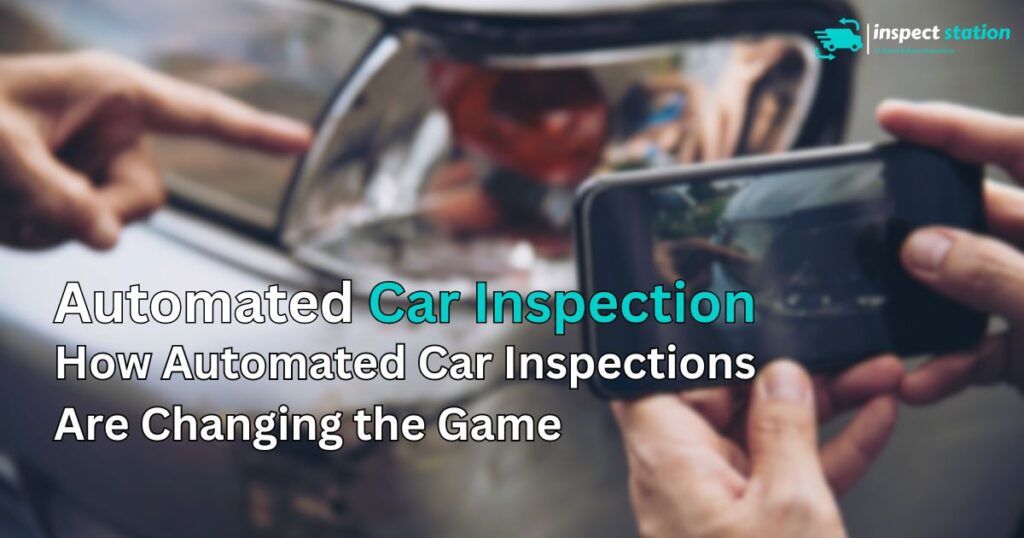The world of vehicle inspections is undergoing a profound transformation, driven by advancements in technology and an increasing demand for precision. What was once a tedious and error-prone process is rapidly evolving into a streamlined, automated car inspection system capable of delivering unparalleled accuracy. This shift from manual to automated inspections marks a significant milestone in the automotive industry, reflecting the growing importance of maintaining vehicle safety and reliability in a world where transportation plays a crucial role in daily life.
The Traditional Manual Inspection Process
For decades, automated car inspections have relied heavily on human expertise and manual processes. Technicians, armed with checklists and diagnostic tools, would meticulously examine each component of a vehicle, from the engine to the brakes, to ensure everything was functioning correctly. This process, though thorough, was fraught with challenges. Human error, variability in assessments, and the time-intensive nature of manual inspections often led to inconsistencies and overlooked issues. Moreover, the reliance on physical documentation and the subjective nature of some evaluations made it difficult to achieve the uniformity necessary for ensuring road safety across different regions and inspection stations.
The Rise of Automated Car Inspections
As technology continues to advance, the automotive industry has begun to embrace automation as a solution to the shortcomings of manual inspections. Automated vehicle inspections leverage cutting-edge technologies such as machine learning, artificial intelligence, and advanced imaging systems to conduct comprehensive assessments of a vehicle’s condition. These systems are designed to perform tasks that were once the sole domain of human inspectors, such as analyzing tire tread depth, detecting engine anomalies, and even assessing the structural integrity of a vehicle’s frame. The integration of automation into vehicle inspections represents not only a technological advancement but also a paradigm shift in how the industry approaches vehicle safety and maintenance.
Advantages of Automated Car Inspections
One of the most significant advantages of automated vehicle inspections is the enhanced accuracy they offer. Machines are not prone to the fatigue, biases, or oversights that can affect human inspectors. As a result, automated systems can provide more consistent and reliable evaluations. Moreover, it is impossible to exaggerate the effectiveness of automated checks. What once took hours can now be completed in a fraction of the time, allowing for more vehicles to be inspected without compromising the thoroughness of the examination. This not only reduces costs for inspection stations but also minimizes downtime for vehicle owners.
In addition to accuracy and efficiency, automated inspections contribute to environmental and safety improvements. By accurately diagnosing issues before they become severe, these systems help prevent accidents and reduce emissions from poorly maintained vehicles. Moreover, the data collected during automated inspections can be used to identify common issues and trends, allowing for proactive maintenance and the development of safer, more environmentally friendly vehicles.
Challenges and Considerations in Adopting Automated Inspections
Despite the many benefits, the transition to automated car inspections is not without its challenges. One of the primary concerns is the technical complexity involved in integrating automated systems with existing infrastructure. Ensuring compatibility and reliability across different vehicle models and inspection environments requires significant investment and innovation. Concerns exist around data security and privacy as well. The vast amount of data generated by automated car inspections, including sensitive information about vehicle performance and usage, must be protected to prevent misuse or breaches.
Another critical consideration is the role of human oversight in automated systems. While automation can handle many tasks, there are still scenarios where human judgment is indispensable. Ensuring that there is a balance between automated processes and human expertise is crucial for maintaining the integrity and reliability of automated car inspections.
The Future of Automated Car Inspections: A Hybrid Approach
Looking ahead, the future of automated car inspections is likely to involve a hybrid approach that blends the strengths of automation with the irreplaceable insights of human inspectors. As automated systems become more sophisticated, they will handle the routine and repetitive aspects of inspections, while humans focus on more complex and nuanced evaluations. This synergy between man and machine will lead to even greater accuracy, efficiency, and reliability in vehicle inspections.
Over the next decade, we can expect to see continued advancements in vehicle inspection technology, with innovations such as predictive maintenance, where vehicles are inspected and repaired before issues arise, becoming more commonplace. The integration of Internet of Things (IoT) devices, real-time data analytics, and blockchain technology could further enhance the transparency and security of inspection processes, creating a future where vehicle safety and reliability are virtually guaranteed.
Conclusion
The automotive industry stands at the cusp of a new era in vehicle inspections. The shift from manual to automated inspections is not just about adopting new technologies; it’s about embracing a future where vehicles are safer, more reliable, and more environmentally friendly. As the industry continues to innovate, the path forward will be one that combines the best of both worlds—harnessing the power of automation while preserving the invaluable expertise of human inspectors. This balanced approach will ensure that vehicle inspections remain a cornerstone of road safety, driving the industry toward a future where every journey is as safe as it can be.
Inspect-Station is a pioneering AI-based vehicle inspection platform that utilizes advanced computer vision technology to automate visual and video-based inspections of physical assets. Our mission is to enhance inspections’ accuracy, efficiency, and reliability, transforming traditional methods with innovative solutions. By integrating cutting-edge AI and machine learning algorithms, we provide a seamless and robust solution for traditional inspection processes.



